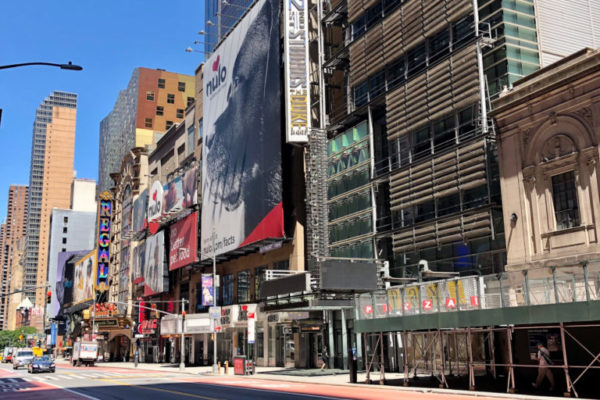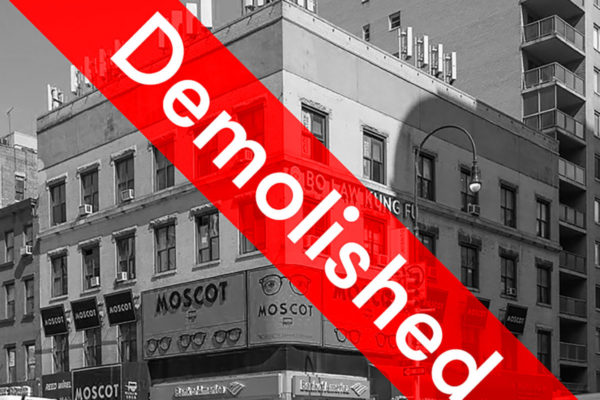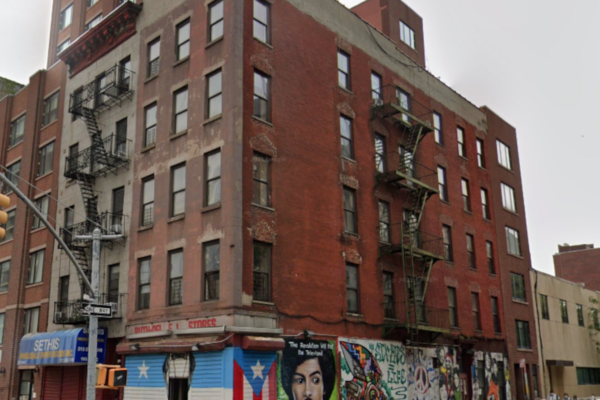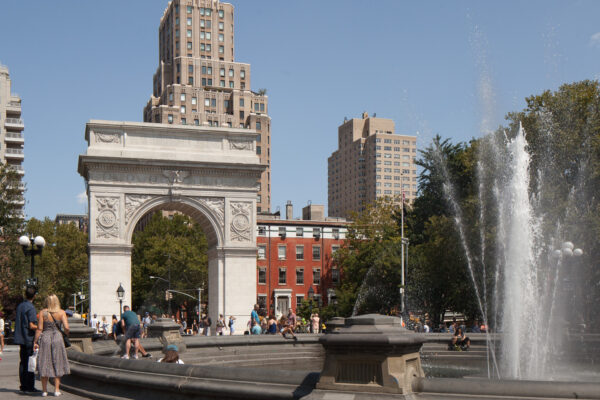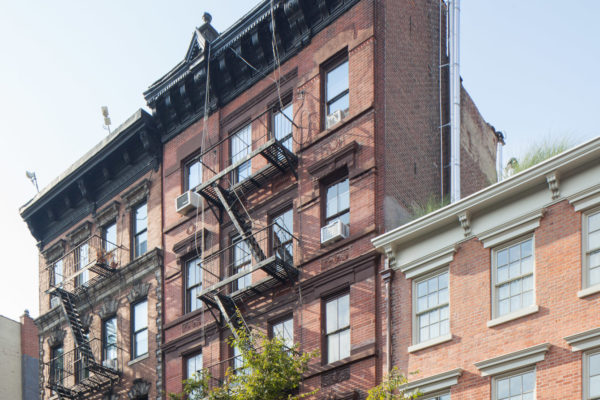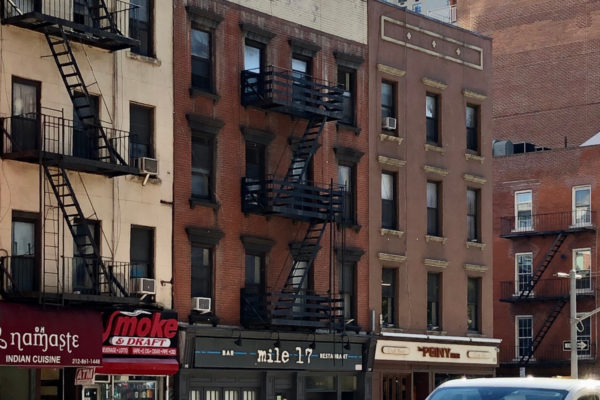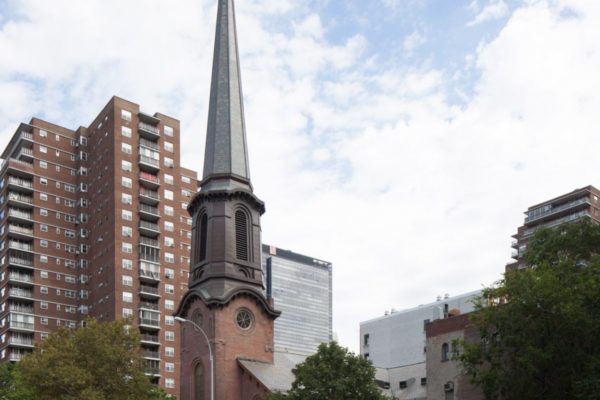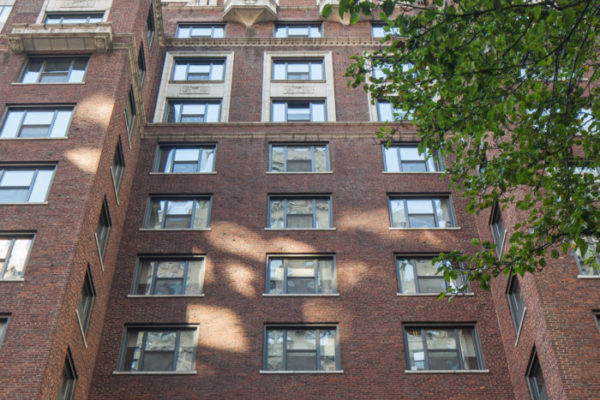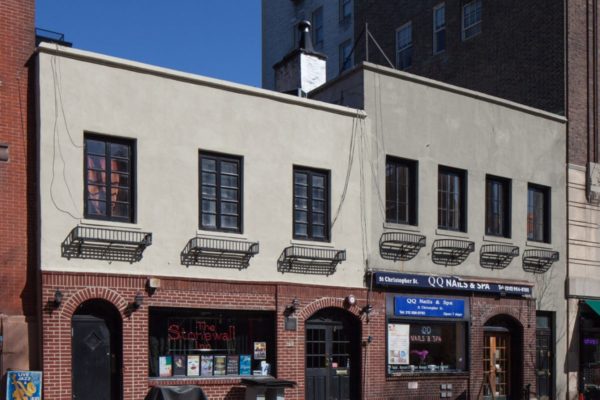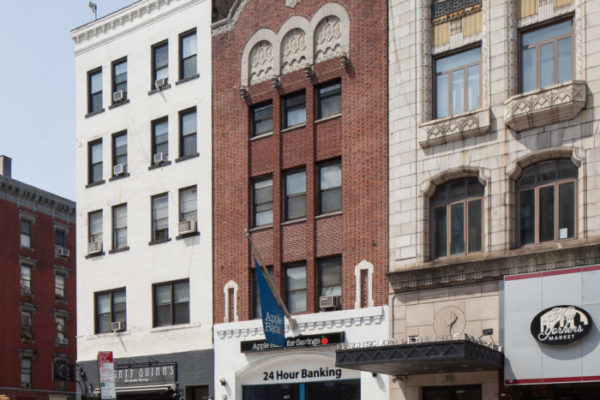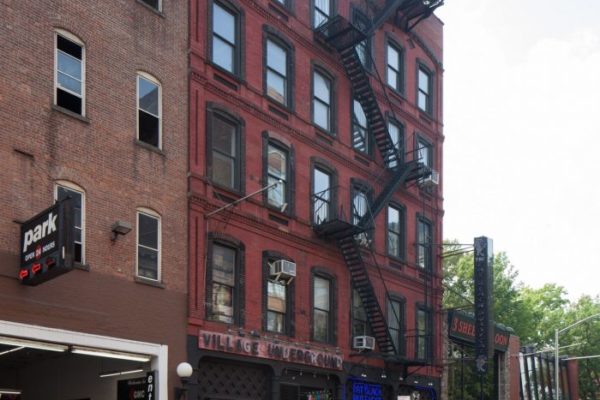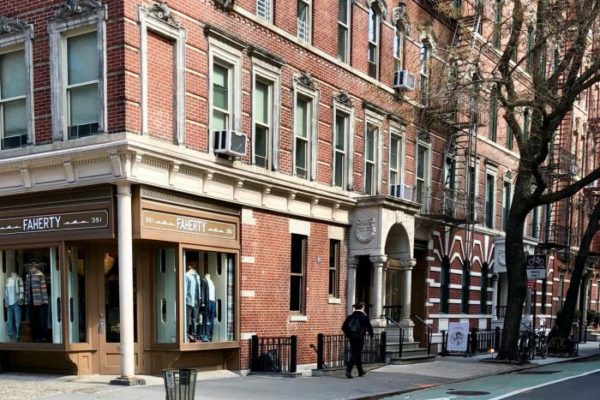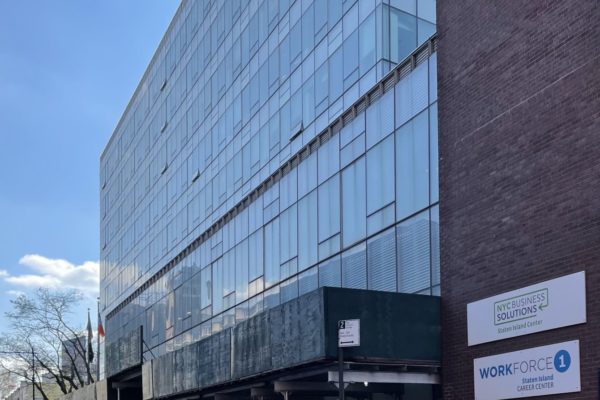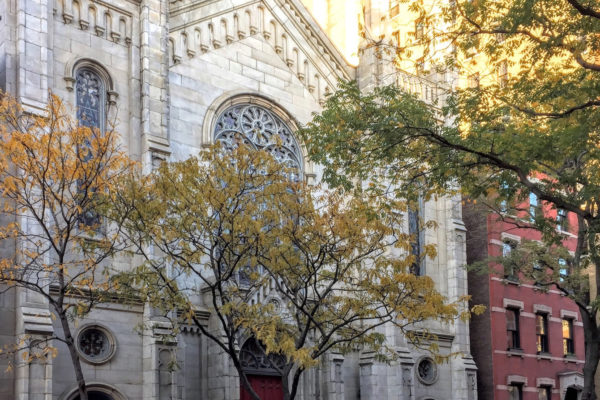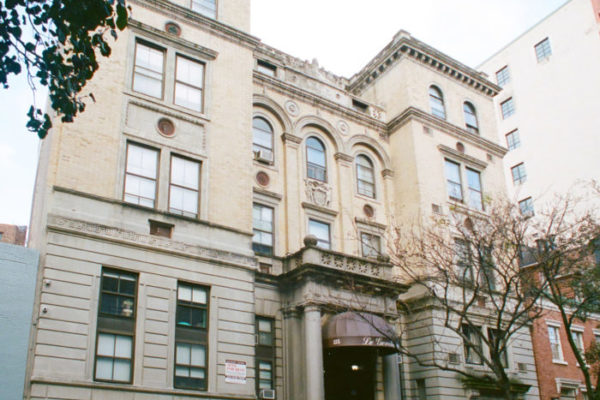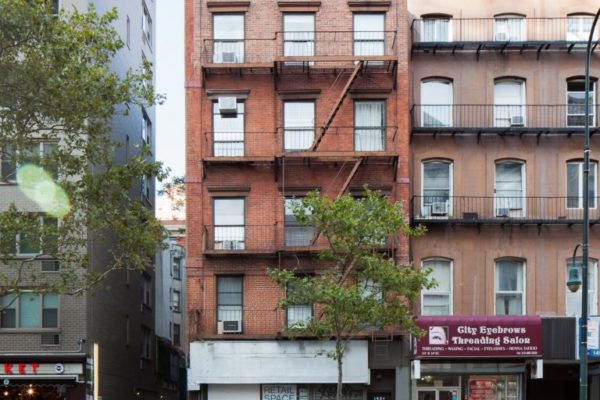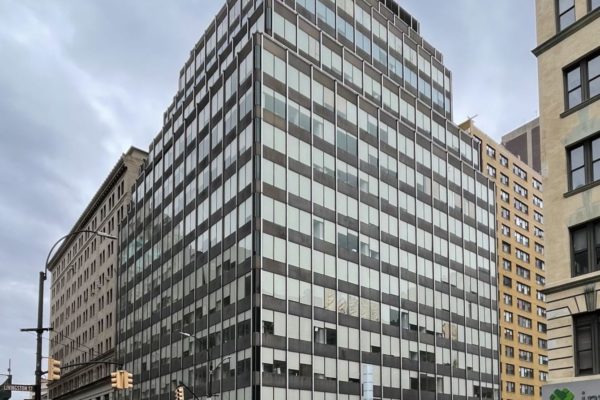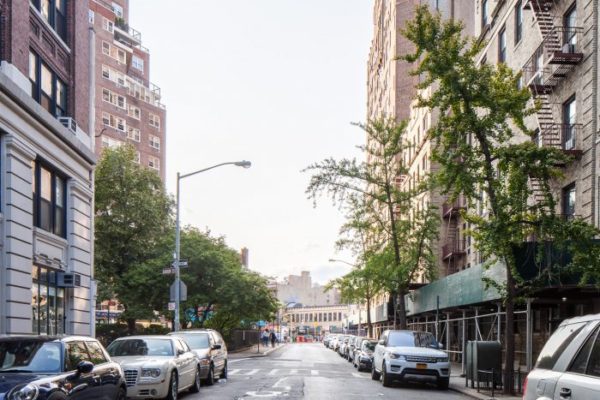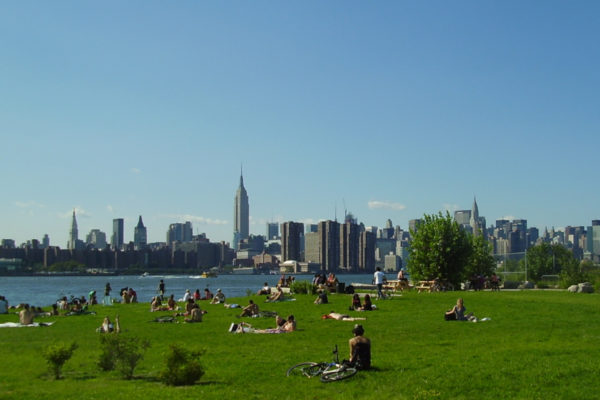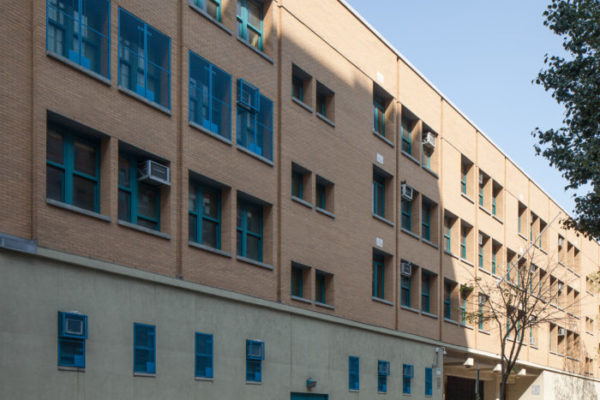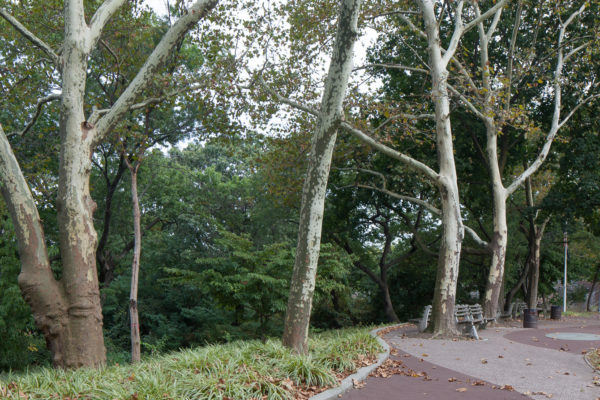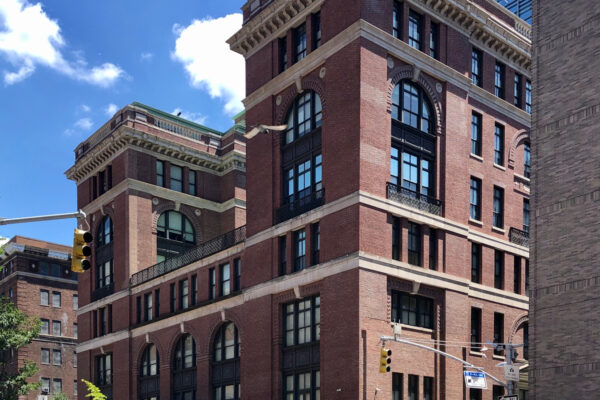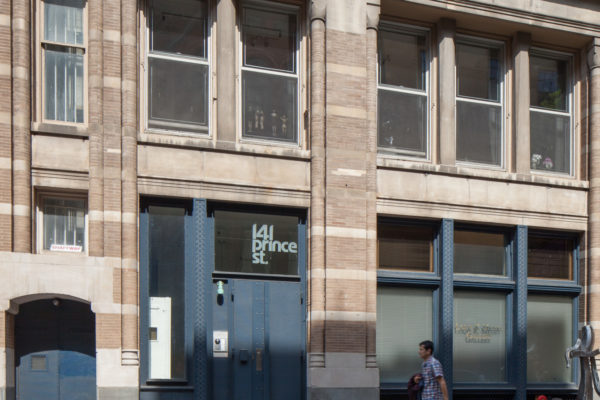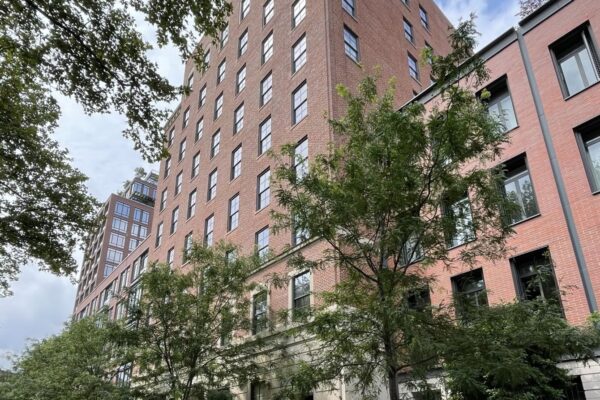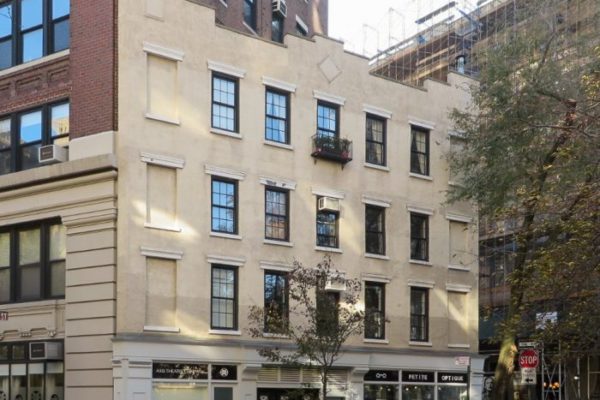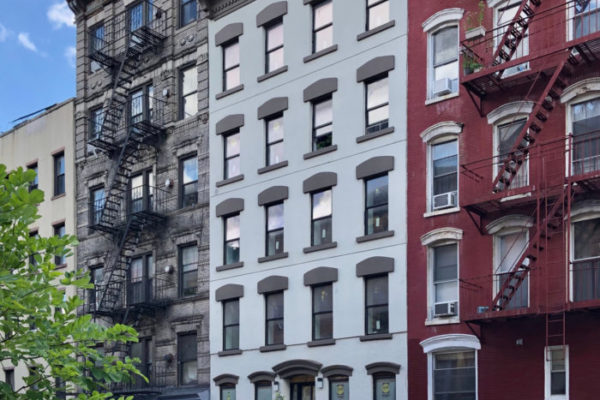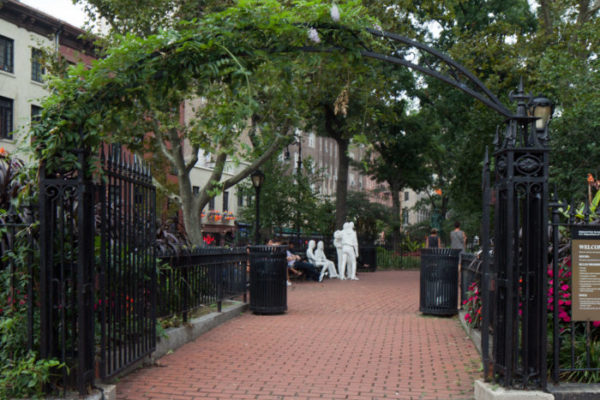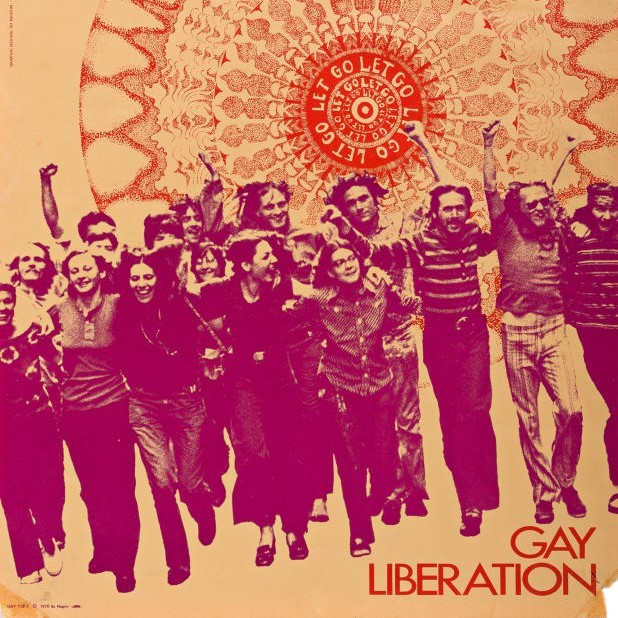
Gay Liberation Front
overview
After the Stonewall uprising, the first LGBT activist organization formed was the Gay Liberation Front (GLF), in July 1969. Among its founders were John O’Brien, Marty Robinson, Martha Shelley, Jim Fouratt, and Bob Kohler. Its New Leftist purpose was described in a newsletter as: “a militant coalition of radical and revolutionary homosexual men and women committed to fight the oppression of the homosexual as a minority group and to demand the right to the self-determination of our own bodies.” GLF joined leftist, Black, and feminist groups fighting against capitalism, racism, the Vietnam War, male supremacy and traditional gender roles, and organized against negative media portrayals of LGBT people.
GLF held its general meetings at the Church of the Holy Apostles, and many of its activities at Alternate U., a free counterculture school and political organizing center. A popular activity there was weekly dances, which provided a rare opportunity for LGBT people to openly dance together. GLF produced COME OUT!, New York’s second gay newspaper, starting in November 1969.
GLF members formed three other groups in 1970: Street Transvestite Action Revolutionaries (STAR), started by Marsha P. Johnson and Sylvia Rivera; Gay Youth, founded by Mark Segal for members under the age of 21; and Radicalesbians, started by Shelley, Karla Jay, and others. At the end of 1970, GLF moved to the Gay Community Center, which it established with STAR.
GLF was largely superseded in influence by the Gay Activists Alliance (GAA), formed in December 1969 by disaffected GLF members, and unlike GLF, focused solely on LGBT issues.
Historic Sites in Gay Liberation Front
A peaceful Times Square protest over recent increased police harassment against the LGBT community in the Greenwich Village and Times Square neighborhoods, on Saturday night, August 29, 1970, was followed... Learn More
After the Stonewall rebellion in June 1969, the first LGBT activist organization formed was the Gay Liberation Front (GLF), in July. GLF used Alternate U., a free counterculture school and... Learn More
Mark Segal, one of the 1970 founders, and the president, of Gay Youth, lived in an apartment in this East Village tenement building from 1969 to 1971, which also served... Learn More
Washington Square Park in Greenwich Village became known as a gay meeting place and cruising area from the late 19th century through the 1960s. Following the Stonewall uprising of 1969,... Learn More
In 1972, friends Leonard Ebreo and Alice Bloch co-founded Liberation House, an early post-Stonewall community center that provided health services to the LGBT community. It was also the first home of... Learn More
The Gay Activists Alliance (GAA) was officially founded in December 1969, after a number of activists left the earlier Gay Liberation Front in November, in order to form an organization... Learn More
From 1969 to 1974, the Church of the Holy Apostles in Chelsea was one of the most important meeting places in New York City for organizations of the early post-Stonewall... Learn More
A Gay Activists Alliance (GAA) zap at the headquarters of the New York Republican State Committee in Midtown on June 24, 1970, protested Governor Nelson Rockefeller’s “crime of silence” about... Learn More
GAY POWER, New York City’s first post-Stonewall gay newspaper, had a brief run covering the city’s gay culture and politics, and operated from a publishing office in this building between... Learn More
Housed in this office building, Richmond College, a division of the CUNY system that later became the St. George campus of the College of Staten Island, was a major center... Learn More
The congregation of this former church was led by the pioneering, openly gay Reverend Paul M. Abels from 1973 to 1984. The church and neighboring parish house also provided meeting... Learn More
Following the March 1970 police raid on the Snake Pit, a nearby gay bar, 167 gay men were arrested and taken to the 6th Police Precinct on Charles Street. Fearing... Learn More
The Gay Activists Alliance zapped the Board of Examiners, the agency responsible for the licensing of teachers, in downtown Brooklyn on April 13, 1971. This was GAA’s second zap focusing... Learn More
New York City’s first ever Pride March was held on Sunday, June 28, 1970 (the one-year anniversary of the Stonewall uprising), and, much to the organizers’ surprise, attracted thousands of... Learn More
Marsha P. Johnson was a Black trans activist and Stonewall veteran who became a key figure in the gay liberation movement after the Stonewall uprising, specifically fighting for trans rights... Learn More
“Lavender Menace” was an action led by Radicalesbians, with women from the Gay Liberation Front and several feminist organizations, at the National Organization for Women’s (NOW) Second Congress to Unite... Learn More
In June 1969, a week before the Stonewall uprising, a group of local Queens residents formed a “vigilante committee” to harass gay men cruising in a nearby Flushing Meadows-Corona Park... Learn More
From the 1930s to the 1970s, for LGBT and especially trans people, Bellevue Hospital was synonymous with medical experimentation and involuntary incarceration. In 1970, the Gay Liberation Front sponsored a... Learn More
The Daughters of Bilitis Center was the first exclusively lesbian center in New York City and one of the first two in the country. The Center operated in a second... Learn More
Beginning in the early 1980s, under the leadership of the Sisters of Charity, an organization within the Catholic Church, St. Vincent’s Hospital was “ground zero” of the AIDS epidemic in... Learn More
Café Society, what has been billed as New York’s first integrated club, featured many of the jazz giants and singers of the day, including Billie Holiday and Sister Rosetta Tharpe,... Learn More
From about 1967 to 1971, activists and then-partners Ellen Broidy and Linda Rhodes rented a fifth floor apartment at 338 East 6th Street. Fellow activist Rita Mae Brown rented the... Learn More
Located just across from the Stonewall Inn, Christopher Park has been at the center of the LGBT rights movement since the historic 1969 uprising. The park was included within the... Learn More
